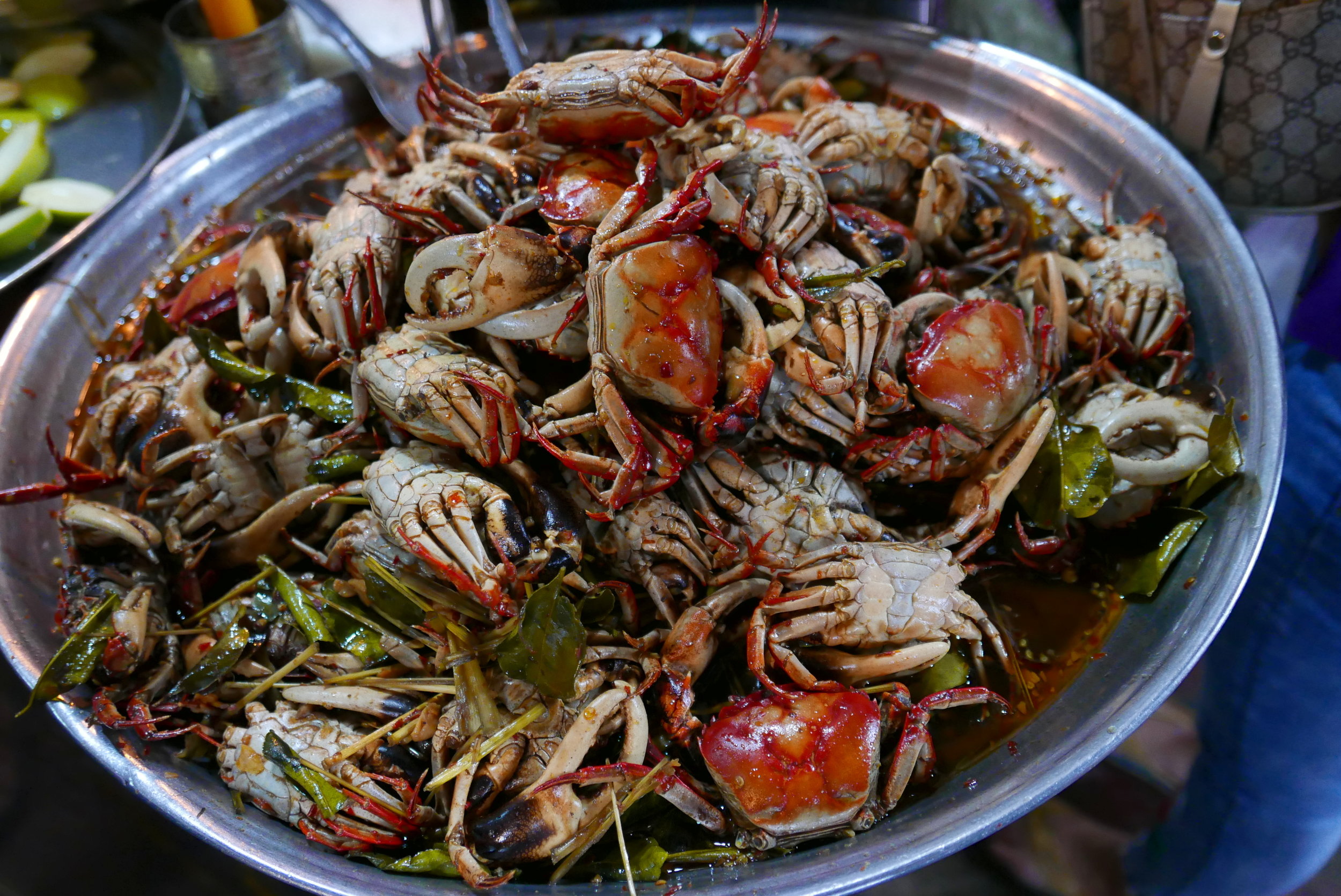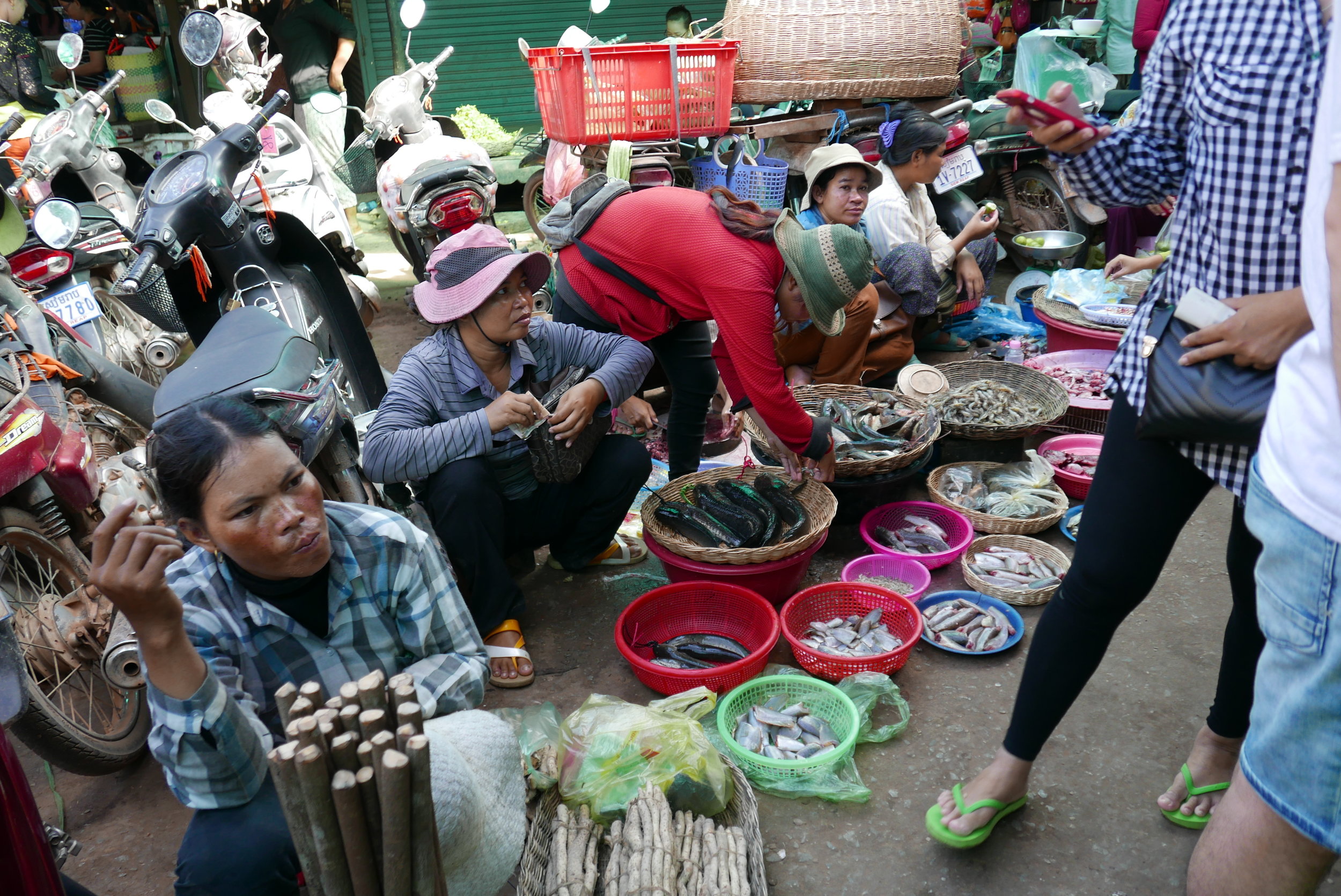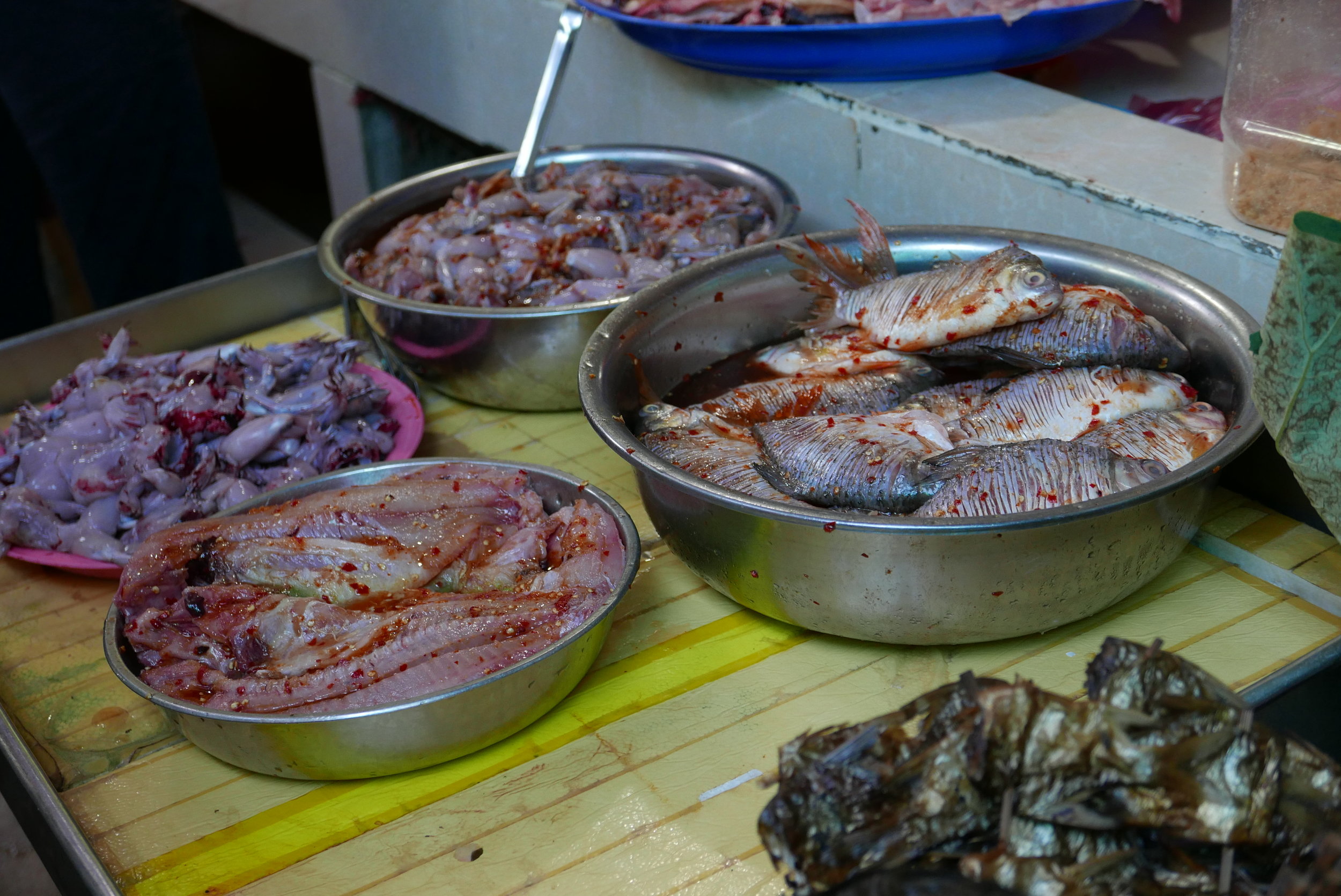Cambodia, one of the poorest countries in Southeast Asia is extremely rich in history which has influenced its Khmer cuisine. Almost all of it was lost during the communist regime, however the essence of its past is still written in the food of today. It goes well beyond the fried bugs, and spiders on skewers at the tourist street food markets, although these food sources are definitely a sign of a resourceful and once starving nation.
The land of Cambodia is extremely rich and fertile where rice flourishes and is today one of Cambodia's most important exports. The Mekong river runs through the country to meet Tonle Sap - the largest freshwater lake within Southeast Asia, allowing freshwater fish and seafood to be extremely abundant.
Cambodia is also home to the largest religious monument in the world, Angkor Wat, taking a good 37 years to build and a complex of other religious temples surrounding it reflecting the cultural and spiritual wealth of the the Hindu-Buddhist Khmer Empire, who was prominent from the 9th - 15th Century.
During the 1970's, under the ruling of Pol Pot where almost 2 million people were killed, malnutrition and starvation was rife and the people foraged and caught whatever they could to eat such as bugs, spiders and frogs.
The fight for the possession of Cambodia resulted in the Siamese-Vietnamese war in the 1940s, and with Thailand and Vietnam at the borders, the country has automatically absorbed influences from both of these food cultures. Battamburg and Siem Reap came under complete Thai rule in 1967 while the rest of the country became a French proctetorate which can be seen in the Colonial architecture - particularly in Phnom Penh and tasted through nam pang, a sandwich consisting of a pate served on a French baguette.
It is hard to look past the influence of India and China, countries that were connected by trade networks, in the extensive noodle dishes and curries found in Cambodian cuisine. The food is less spicy than neighbouring Thailand and has more sour, bitter, sweet and salty notes.
The vast amount of fish and seafood in Cambodia has led to people preserving their abundant produce in two popular forms - Mam, salted and fermented snakehead fish and Prahok - a super pungent fermented fish paste which is used as a base for many dishes. Prahok definitely requires a somewhat adventurous palate.
Spices such as cardamom, turmeric and the infamous kampot pepper are found in the south west regions of the country and is used extensively in both sweet and savoury dishes. Tamarind is also common in Cambodian food to add a sour element to many dishes.
Vegetables and herbs are used to add texture and freshness - reminiscent of Vietnamese cuisine, however the herbs used are much bolder in flavour. Kaffir lime leaves, coriander, rice paddy herb, sweet basil, M’rum, M’reah, Angkeadei and Kantrup are common herbs used.
The idea of foraging is such a trendy term these days but during the tumultuous times of civil war and the Khmer Rouge regime, Cambodians foraged the land for whatever they could eat when food was scarce. This is a significant element in their cuisine which is a key to their history and has stayed as tradition and an integral part of their diet. Lemongrass, galangal, palm sugar, ginger and mild chillies are also significant ingredients found in the country's dishes.
Fresh fruits are abundant such as bananas, mangoes, jackfruit, durian, longans (above picture, far right) and unripe fruit can also be pickled (above picture, green papaya in salt, sugar and vinegar).
Chicken and pork are proteins that come secondary to fish in the Cambodian diet. Like in most Southeast Asian countries, no part of an animal is wasted and it is such a sight to wander the markets to see pigs heads, glistening bowls of innards and cow hooves that will all be used to create rich stocks, soups, curries and stews. Preserved sausages are also very popular (above, far right), they dangle from numerous stalls in the market alongside smoked fish (above, second right) and dried squid.
The Cambodians are wonderful and kind people despite their disturbing past. They are resilient and battle with poverty, low quality education and hospitals where wealthy locals can buy themselves a doctorate if they wish. Education training establishments have been set up in the form of f&b outlets, teaching hospitality and cooking skills to less privileged youth which is a positive movement.
One can be exposed to the rich food culture in Cambodia at any market or street food vendor. Cockles are laid our on large carts, sun dried and served with chilli (not advised to eat these because of the bacteria) and local bananas are pressed between wood and dipped in a sesame seed batter and fried to perfection. Frog legs stuffed with pork mince are skewered and then charcoal grilled as well as prahok paste which is wrapped in banana leaves.
Heartier street food dishes are bor bor (a short grain rice porridge with bean sprouts, chilli and fermented beans), lort char (short rice noodles stir fired with pork and chives), Nam Banh Chok (fermented rice noodles in a fish gravy with banana blossom, water lily stems and herbs), fish amok (fried fish in curry sauce steamed in banana leaves) and bai sach crouk (pork marinated in garlic, coconut milk, soy and charcoal grilled).
Cambodian cuisine is definitely quite unique and has more subtle flavours. The dishes reflect the history and cultures that the country has endured. Although the cuisine was almost wiped out, it still holds strong roots to rice production and rice products as well as the country's signature fermented fish. It is an evolving cuisine and a country where international chefs are setting up restaurants. With their culinary techniques and the use of the unique local produce - who knows where the Cambodian food culture will be in 10 years time.




































